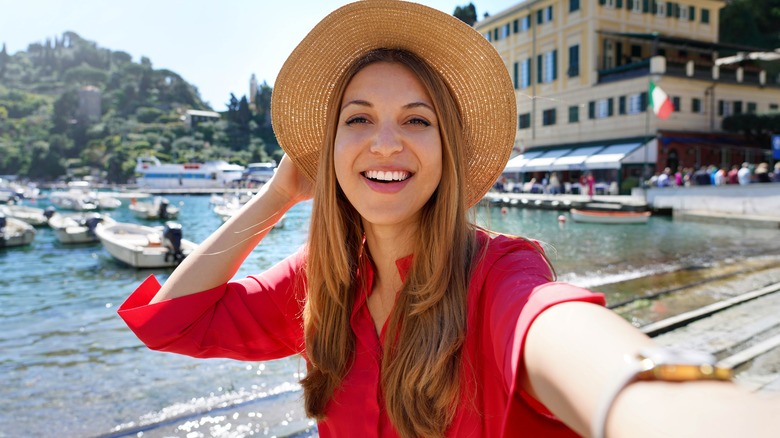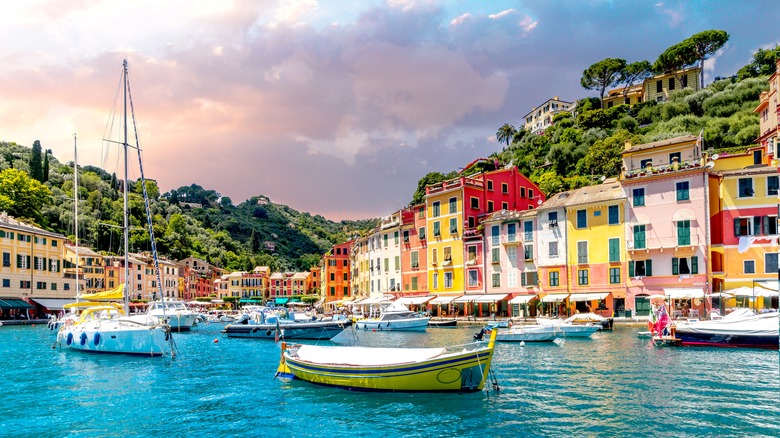Did The Popular Italian Town Of Portofino Really Ban Tourists From Taking Selfies?
Visitors to Portofino, one of the most picturesque spots in the Italian Riviera, might want to leave their selfie sticks at home when wandering around the city. Various news outlets, including Forbes and BBC, have reported that it is now illegal to take selfies at some of the city's most iconic locations. For example, an April 2023 Forbes headline reads "Famed Italian Coastal Town Imposes Selfie Ban With $300 Fine." The article explains that "The Riviera village receives hordes of tourists in its narrow streets every summer," and that "the new restrictions aim to reduce problems of overcrowding at the town's scenic viewpoints," by introducing "stricter rules surrounding photo-taking."
However, Explore recently found out that another supposed Italian law — the one prohibiting flip-flops on the island of Capri — turned out not to exist, according to our research. Given this, we thought we should dig a little deeper into Portofino's selfie ban, too. Our results confirmed that yes, a law has recently been enacted in Portofino to curb some annoying tourist behaviors (similar to the unspoken walking rule in Venice). But no, the rule doesn't target selfies or photo-taking, per se. Rather, it enforces "no-waiting zones" in areas with heavy pedestrian traffic (such as the popular pier on the city's waterfront), to prevent people from hanging around in those areas and clogging up the route.
The language of the new law in Portofino
What Portofino's law states is that between 10:30 a.m. and 6 p.m. during the summer (aka high tourist) months, people caught lingering in Portofino's "no-waiting zones" can incur a fine of 270 euros (around $300). We interpret this to mean that theoretically, you can take all the selfies you want anywhere in the city, as long as you keep moving. What you can't do is stop, whether that's to take selfies, kiss your sweetheart, slurp the world's finest gelato, or simply gaze at the remarkable view.
"The objective is not to make the place more exclusive but to allow everyone to enjoy our beauty," Portofino's mayor, Matteo Viacava, explained (via Shengen News). This can be challenging for a town of around 400 residents that can receive more than 10,000 visitors during high tourist season. When it comes to trying to manage the flow of tourism more effectively, Portofino is hardly alone in Italy. From the Italian Riviera and Cinque Terre to further south along the Mediterranean coast, dozens of seaside towns grapple with the same dilemmas, sometimes resorting to creative solutions. On the Amalfi Coast, for example, cars are only allowed on the road between Vietri sul Mare and Positano on certain days, depending on the last number of their license plate. These rules might feel restrictive to some, but the bottom line is that they maximize safety and ease stress for both visitors and residents.

